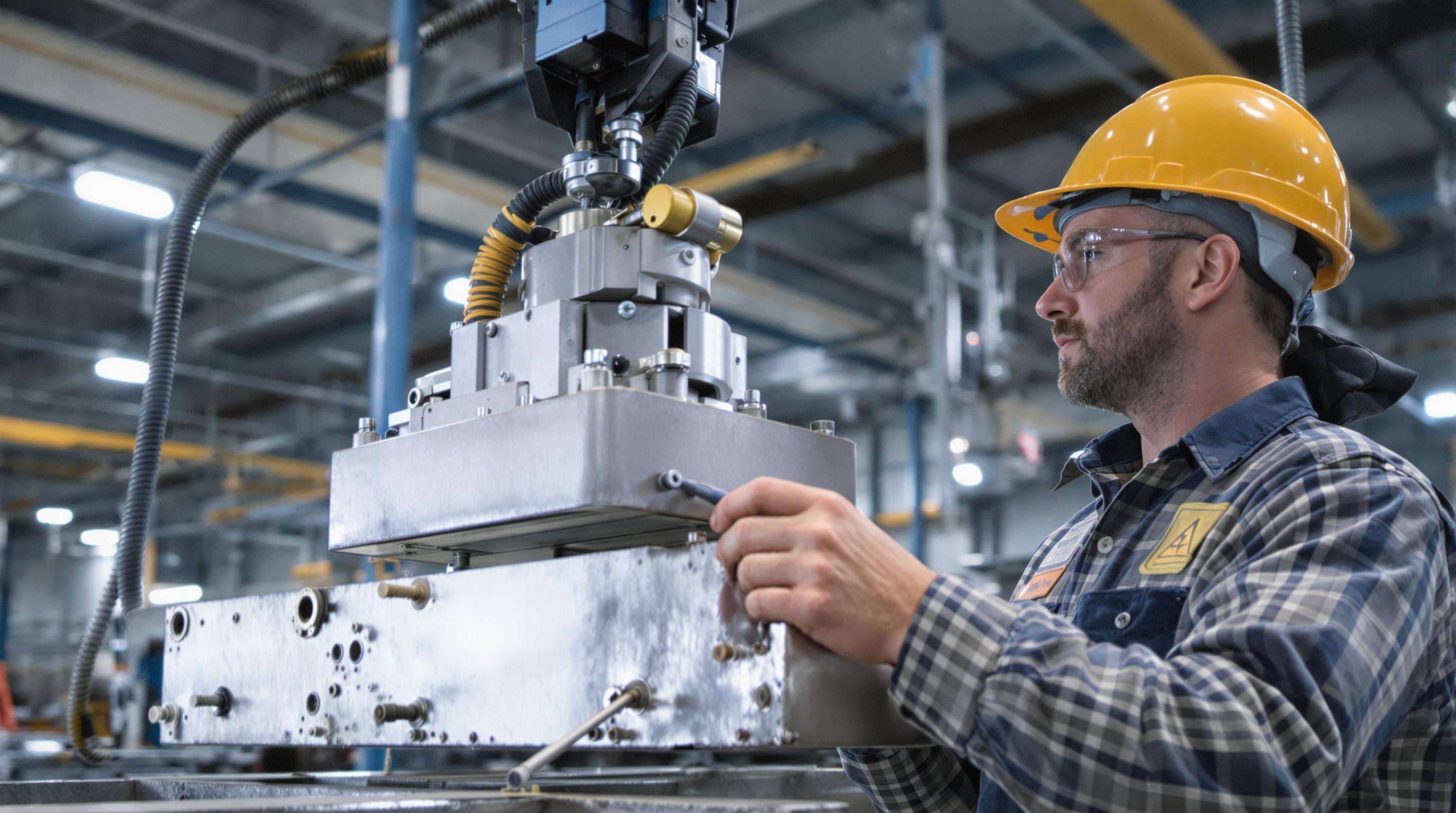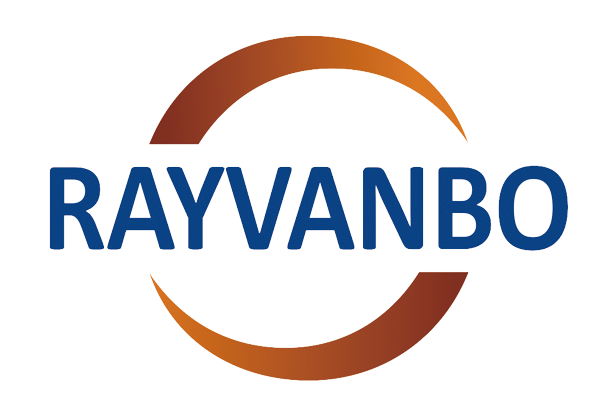1. Ispezioni pre-utilizzo per Sollevatore Magnetico Permanente Sicurezza

Ispezioni rigorose pre-utilizzo prevengono guasti catastrofici nell'uso di sollevatori a magnete permanente. Questi protocolli garantiscono l'integrità dell'attrezzatura e sono conformi agli standard OSHA e ASME B30.20 per la sicurezza industriale.
Checklist per ispezione visiva per il rilevamento di danni
Ispezionare la carcassa, la maniglia e la superficie magnetica del sollevatore prima di ogni turno:
- Verificare la presenza di crepe, deformazioni o corrosione sulle superfici metalliche
- Controllare che viti, cerniere e meccanismi a leva siano saldamente fissati
-
Testare gli indicatori (ad esempio, etichette portanti) per verificarne la leggibilità
Documentare eventuali anomalie come scrostature della vernice superiori al 10% della superficie – una delle principali cause di ridotta adesione magnetica.
Requisiti di Pulizia Superficiale per un Contatto Ottimale
Rimuovere i contaminanti sia dalla superficie del sollevatore che da quella del carico per massimizzare la densità del flusso magnetico:
| Tipo di Contaminante | Metodo di Rimozione | Intervallo di Ricontrollo |
|---|---|---|
| Ruggine e ossidazione | Spazzolatura con filo metallico | Dopo 5 sollevamenti |
| Pellicole di olio/grasso | Pulizia con solvente | Prima di ogni sollevamento |
| Strati di vernice | Smerigliatura ≈ 0,5 mm di profondità | Dopo la modifica |
La norma ASME B30.20 richiede che le aree di contatto siano prive di detriti, poiché anche particolati di 0,1 mm possono ridurre la forza di tenuta dell'18% nelle applicazioni in acciaio laminato a freddo.
Procedure di prova dell'integrità strutturale
Eseguire test di carico trimestrali al 125% della capacità nominale utilizzando pesi calibrati. Per sollevatori ad uso continuo:
- Misurare la riduzione della forza magnetica di trazione utilizzando un dinamometro
- Ispezionare i pezzi polari interni per verificare eventuali delaminazioni sotto luce UV
-
Verificare il funzionamento dei meccanismi di rilascio d'emergenza in condizioni simulate di mancanza di energia elettrica
I sollevatori che presentano una riduzione del 5% delle prestazioni rispetto al valore iniziale richiedono una immediata ricalibrazione in base a linee guida sulla sicurezza del settore .
2. Valutazione corretta del carico con sollevatori magnetici permanenti

Calcolo dei limiti di peso utilizzando un fattore di sicurezza 3:1
I calcoli per la capacità dei sollevatori magnetici permanenti richiedono un fattore di sicurezza 3:1 in base agli standard ASME BTH-1-2023, il che significa che il carico di lavoro non può superare il 33% della forza di distacco del dispositivo. Per un sollevatore con una resistenza di distacco di 10.000 libbre, il carico massimo sicuro diventa 3.300 libbre.
Compatibilità del materiale per superfici ferromagnetiche
L'adesione magnetica efficace richiede un contatto diretto con materiali ferromagnetici come l'acciaio al carbonio (ASTM A36) o l'acciaio inossidabile della serie 400. I metalli non ferrosi come l'alluminio non possono essere sollevati. Lo spessore della superficie deve superare 0,5 pollici per mantenere concentrato il flusso magnetico.
Centratura dei carichi per prevenire spostamenti pericolosi
I carichi devono essere centrati entro il 5% dell'area di contatto del sollevatore per mantenere un'ottimale distribuzione del flusso magnetico. Posizionamenti fuori centro con spostamenti laterali superiori al 10% riducono la capacità di tenuta del 50%. Utilizzare strumenti di allineamento laser o guide template durante il posizionamento, in particolare per oggetti di forma irregolare.
3. Tecniche di posizionamento sicure per sollevatori magnetici
Strategie di allineamento su superficie piana
Per ottenere un'ottimale adesione magnetica, assicurare un contatto completo tra il sollevatore e la superficie del carico. Posizionamenti errati riducono la forza di presa fino al 25% quando i magneti entrano in contatto con i bordi invece che con le superfici piane.
Per superfici curve, utilizzare piastre di livellamento certificate per un carico ≥150% del peso sollevato, per creare zone piane artificiali. Verificare il contatto con pellicole sensibili alla pressione prima di sollevare carichi critici.
Configurazione del traversino per magneti multipli
Quando si utilizzano sollevatori in tandem, configurare le travi a paranco con una tolleranza angolare di ≈5° per evitare una distribuzione irregolare della forza. La rigidità del materiale delle travi deve privilegiare l'acciaio al carbonio rispetto all'alluminio.
Magnetic Lever Engagement Best Practices
Azionare i meccanismi di sollevamento utilizzando movimenti deliberati e completi della leva per garantire l'attivazione completa del circuito magnetico. Formare gli operatori a:
- Verificare il conferma acustica "clic" dell'innesto del blocco
- Eseguire test di trazione con il 10-15% del peso del carico prima del sollevamento
- Mantenere le manopole delle leve parallele alla superficie del carico durante il trasporto
4. Conformità ASME B30.20 nelle operazioni di sollevamento
Il rispetto degli standard ASME B30.20 garantisce che i sistemi di sollevamento magnetico soddisfino rigorosi criteri di sicurezza per la movimentazione dei carichi.
Requisiti di documentazione per il test dei carichi
ASME B30.20-3 richiede registrazioni dettagliate per tutti i test sui carichi, tra cui:
- Test di prova al 110% della capacità nominale prima del primo utilizzo
- Registri di ricertificazione annuale con timestamp e firme degli ispettori
- Rapporti di rilevamento delle crepe da ispezione con liquido penetrante o ultrasuoni
Standard di Certificazione dell'Operatore
La sezione 20-3.4 richiede:
≥ Programmi di formazione di 40 ore che coprono la teoria magnetica e i protocolli di rilascio d'emergenza
≥ Valutazioni annue di competenza con esami scritti/pratici
≥ Test della vista per un'acuità visiva di 20/40 con lenti correttive
5. Protocolli di Sicurezza per il Trasporto di Carichi Magnetici
Tecniche di Movimentazione Controllata per Prevenire Oscillazioni
Avviare il trasporto con un'accelerazione graduale per stabilizzare i carichi prima dell'operazione a piena velocità. Gli operatori devono mantenere la velocità delle gru al di sotto dei 2 ft/sec per carichi inferiori a 1 tonnellata.
Procedure per la manutenzione del passaggio libero sopra la testa
Stabilire zone tampone di 18 pollici tra i materiali sollevati e le strutture fisse. Per impianti su più livelli:
- Mappare i percorsi di movimentazione utilizzando telemetri laser durante la pianificazione pre-operativa
- Installare sensori di collisione sui carrelli delle gru
- Eseguire audit trimestrali del passaggio libero con strumenti di misura certificati
Controllo delle vibrazioni durante il trasporto dei materiali
Limitare le oscillazioni verticali a <0,5g durante il trasporto utilizzando:
| Carichi standard | Zone ad alta vibrazione | |
|---|---|---|
| Sistemi di smorzamento | Isolatori in gomma | Ammortizzatori idraulici |
| Monitoraggio | Ispezione Manuale | Accelerometri in tempo reale |
| Velocità massima | 1,5 ft/sec | 0,75 ft/sec |
Assicurare sempre i dispositivi di ritenzione secondaria prima di attraversare superfici irregolari.
Domande frequenti (FAQ)
Quali sono gli standard di sicurezza principali per i sollevatori a magnete permanente?
Gli standard OSHA e ASME B30.20 sono le linee guida principali che regolano l'uso sicuro dei sollevatori a magnete permanente negli ambienti industriali.
Con quale frequenza devono essere effettuati i test sull'integrità strutturale?
Test trimestrali del carico devono essere eseguiti al 125% della capacità nominale per i sollevatori ad uso continuo.
Qual è lo scopo di un fattore di sicurezza 3:1 nei calcoli del carico?
Il fattore di sicurezza 3:1 garantisce che il carico di lavoro sia limitato al 33% della forza di rottura del dispositivo per motivi di sicurezza.
Perché la pulizia della superficie è importante per i sollevatori magnetici?
Le aree di contatto prive di detriti sono fondamentali perché anche particelle di 0,1 mm possono ridurre significativamente la forza di tenuta, influenzando l'efficienza del sollevatore.
Quale formazione è richiesta per gli operatori dei sollevatori magnetici?
Gli operatori devono frequentare almeno 40 ore di formazione, valutazioni annue di competenza e test della vista per garantire prestazioni ottimali e conformità alla sicurezza.
Indice
- 1. Ispezioni pre-utilizzo per Sollevatore Magnetico Permanente Sicurezza
- 2. Valutazione corretta del carico con sollevatori magnetici permanenti
- 3. Tecniche di posizionamento sicure per sollevatori magnetici
- 4. Conformità ASME B30.20 nelle operazioni di sollevamento
- 5. Protocolli di Sicurezza per il Trasporto di Carichi Magnetici
-
Domande frequenti (FAQ)
- Quali sono gli standard di sicurezza principali per i sollevatori a magnete permanente?
- Con quale frequenza devono essere effettuati i test sull'integrità strutturale?
- Qual è lo scopo di un fattore di sicurezza 3:1 nei calcoli del carico?
- Perché la pulizia della superficie è importante per i sollevatori magnetici?
- Quale formazione è richiesta per gli operatori dei sollevatori magnetici?

